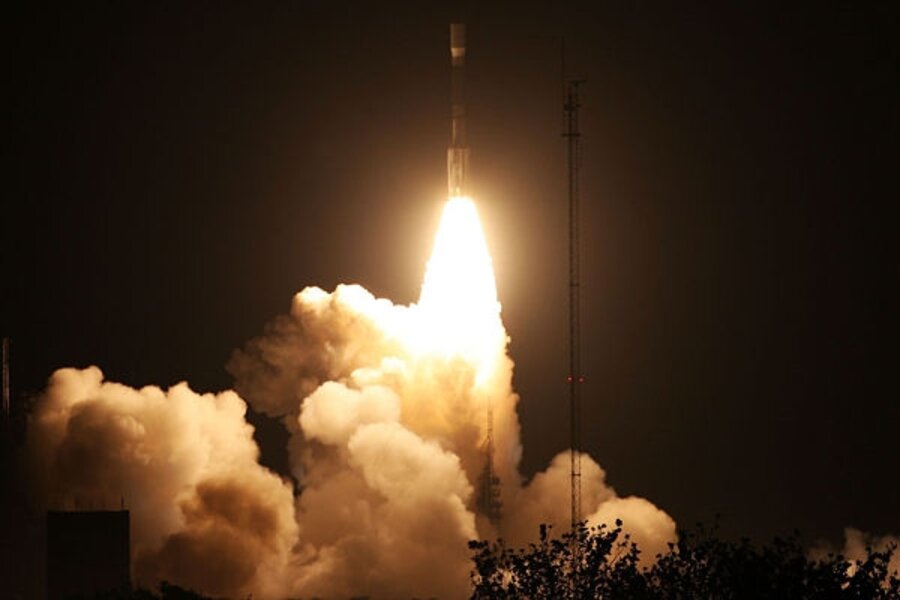A brilliant launch for NASA's planet-hunting pioneer
Loading...
NASA's planet-hunting Kepler mission is off to a spectacular start with an on-time, flawless night launch.
Kepler's lift-off from cape Canaveral in Florida lit the landscape at 10:49 p.m. eastern time Friday. The mission's objective is to hunt for Earth-like planets in Goldilocks orbits around their stars -- distances where conditions are not too hot, not to cold, but are just right for liquid water to be a stable feature of a planet (read more about the mission here).
For at least 3.5 years, Kepler's sensitive detector will measure the light from 100,000 stars simultaneously and virtually continuously. It will detect planets that are in just the right orientation to pass between Kepler and their host stars. Kepler's detector is designed to track the tiny dimming the starlight will display as the planet swings in front of it.
"Kepler now has the perfect place to watch more than 100,000 stars for signs of planets," said William Borucki, the mission's science principal investigator, in a post-launch statement. Dr. Borucki, with NASA's Ames Research Center at Moffett Field, Calif., has worked on the mission for 17 years. "Everyone is very excited as our dream becomes a reality. We are on the verge of learning if other Earths are ubiquitous in the galaxy."
The spacecraft will be gathering its data from an orbit around the sun similar to Earth's. But it will follow Earth around their mutual path. In fact, Kepler's orbit will take 371 days to complete, versus 365 days for Earth.
But first comes the shakedown period. Mission controllers will spend the next 60 days making sure that the spacecraft's systems are functioning properly.
And that means remembering to remove the "lens cap." It's a critical step that comes in about three weeks. Mission controllers must ditch the dust cover that has been protecting Kepler's starlight detector, or photometer.
Once Kepler's hunt for planets begins in earnest, it will be looking at three types of stars along what astronomers call the main sequence -- all dwarf stars ranging from hot, bright blue stars to relatively cool red dwarfs, fainter than the sun.
Who's first?
The first type of planets Kepler picks up are likely to be so-called hot Jupiters -- gas-giant planets with as much or more mass than Jupiter, but with orbits more like Venus's or Mercury's (or even closer than Mercury's).
And each type of star has a different habitable zone. That will affect how quickly the Kepler team can see enough transits to be confident they've detected a planet. Even then, they will be looking for confirmation from ground- and space-based telescopes.
For yellow dwarfs, whose masses are similar to the sun's (yep, it's a yellow dwarf, too). For these stars, the habitable zone is about 93 million miles out, give or take a million or so. Over three years, one could expect to see two or three transits if a planet occupies an orbit in this region.
For red dwarfs, which are fainter than the sun and the faintest star type Kepler will target, the habitable zone lies much closer to the star. An Earth-like planet in a red dwarf's habitable zone would transit its sun several times in 3.5 years or more.
The final type of star is the brilliant white to blue-white main-sequence dwarfs. Their higher brightness means their habitable zones will be farther out than the sun's. Orbital periods for planets in that zone around these kinds of stars will exceed an Earth year.
That's why Kepler mission planners have six years worth of fuel on the spacecraft. Once 3.5 years is up, expect NASA to extent the mission -- especially if Kepler has bagged several confirmed Earth-like planets by then. The longer "stare" time will increase the chances of spotting and confirming planets in the habitable zones of the brightest bulbs on the shelf.





